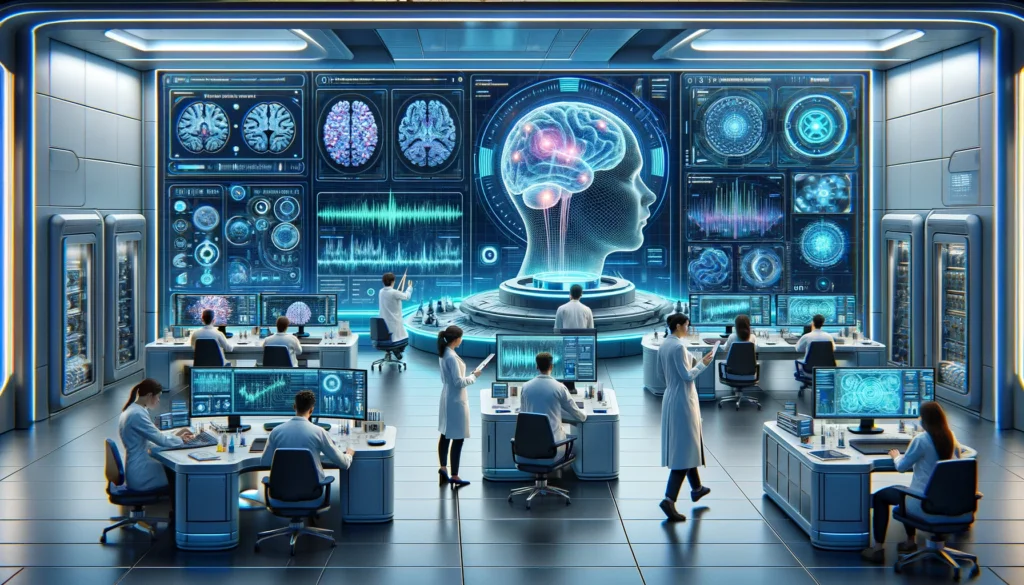Stanford AI Model Cracks the Skull: Detecting Distinct Male and Female Brain Patterns with 90% Accuracy
For decades, the question of how male and female brains differ has sparked scientific debate. Now, Stanford researchers have taken a significant step towards unlocking this mystery using the power of Artificial Intelligence (AI). Their study, published in the prestigious journal Proceedings of the National Academy of Sciences (PNAS), utilizes a deep learning model to analyze brain scans with remarkable accuracy, revealing distinct patterns in brain organization between sexes. This breakthrough has the potential to revolutionize our understanding of brain function, paving the way for personalized approaches to treating mental health conditions.
The Hidden Landscape: AI Analyzes Brain Scans
The study analyzed functional Magnetic Resonance Imaging (fMRI) data from roughly 1,500 young adults, focusing on sex-related differences in brain function. These differences are crucial for understanding the root causes of behavioral and mental health disparities between men and women. Enter the hero of this story: a sophisticated AI model known as a spatiotemporal deep neural network (stDNN). This AI diligently examined the brain scans, uncovering distinct patterns in how male and female brains are organized.
The results were astounding. The stDNN achieved over 90% accuracy in differentiating male from female brains based on their functional dynamics. This accuracy was held across multiple testing sessions and independent datasets, highlighting the model’s robust performance.
Key Networks and Explainable AI: Decoding the Differences
The analysis pinpointed vital brain networks with significant differences in man & woman brains, including the default mode network, striatum, and limbic system. These networks play crucial roles in functions like emotional processing, memory, and reward-seeking, suggesting potential explanations for behavioral variations between sexes.
But the study didn’t stop there. The researchers employed explainable AI (XAI) techniques to identify the specific brain features responsible for these distinctions. These features could even predict cognitive profiles specifically for each sex.
This finding challenges the previously held notion of a continuous spectrum of male-female brain organization. Instead, the study emphasizes sex as a fundamental factor in brain structure and function, with far-reaching implications for personalized medicine in treating mental and neurological disorders.

Beyond Differentiation: Predicting Cognitive Abilities
Taking their research a step further, the team explored whether sex-specific brain features could predict individual performance on cognitive tasks. They created two specialized AI models, one tailored to men and another for women, based on the identified brain patterns. The results were striking: each model accurately predicted cognitive abilities within its designated sex group, but failed for the opposite sex. It strongly suggests that the functional differences observed have real-world impacts on behavior and cognitive function.
Implications and Future Directions: Towards Precision Psychiatry
Dr. Vinod Menon, the study’s lead author, professor of psychiatry and behavioral sciences, and director of the Stanford Cognitive and Systems Neuroscience Laboratory, emphasizes the significance of these findings: “These models worked well because we successfully separated brain patterns between sexes. That tells me that overlooking sex differences in brain organization could lead us to miss key factors underlying neuropsychiatric disorders.”
The potential applications of this AI model extend far beyond sex differences. It can be used to investigate various questions about brain connectivity and its relationship to cognitive functions or behaviors. The broader context of AI in neuroscience paints an exciting picture. Recent studies have utilized AI for tasks like retrieving images from MRI scans, using brain cells for speech recognition, and analyzing speech patterns in individuals with schizophrenia.
The Stanford team plans to make their model readily available to the research community, hoping to accelerate progress in understanding and treating mental illnesses and learning disabilities. Dr. Menon foresees these AI tools playing a crucial role in addressing the challenges individuals face due to brain differences. He aptly concludes, “Our AI models have very broad applicability” potentially guiding toward the new era of precision psychiatry.
A Glimpse into the Future
Looking ahead, envision a future where AI models can read minds in real time by analyzing neurological data. It may seem like science fiction, but the rapid advancements in this field suggest it might not be as distant as we think.

This landmark study marks a significant leap forward in our understanding of the male-female brain division. By utilizing the power of AI, researchers are unlocking the secrets hidden within our brains, paving the way for more personalized and effective treatments for mental health conditions. As we explore this unknown territory, the future of mental health holds immense promise, fueled by the transformative power of AI.




